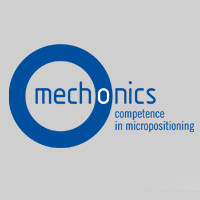Miniature translation stages
81825-D München
2/B Unnützstrasse
+49 89 42024207
+49 89 42024206
Miniature translation stages
Anfrage an Anbieter senden
- Miniature translation stages are designed to be small and compact, making them suitable for applications where space is limited.
- These stages offer high-precision movement with sub-micron or even nanometer-level resolution. They are capable of extremely fine adjustments.
- The primary function of these stages is to provide linear translation along one or more axes. Some stages offer multi-axis translation for increased flexibility.
- Different mechanisms can be used for achieving linear motion, including ball screws, lead screws, rack and pinion, voice coil actuators, and piezoelectric actuators. The choice of mechanism depends on the application's requirements.
- Miniature translation stages have a limited load capacity compared to larger stages. It's important to choose a stage that can support the weight of your target object.
- The travel range varies depending on the specific stage but typically falls within the range of a few millimeters to a few centimeters. Longer travel ranges may require larger stages.
- Stages are designed to provide stability and stiffness to prevent vibrations and unwanted movement during positioning.
- Many miniature translation stages come with integrated feedback mechanisms, such as encoders or sensors, to provide accurate position information for closed-loop control.
- Stages are typically made of materials with low thermal expansion coefficients and high rigidity to minimize thermal drift and maintain stability.
- Some stages are designed for specific environments, such as vacuum chambers or cleanrooms, and may have special coatings or materials to withstand those conditions.
- Depending on the application, these stages may be manually operated, motorized, or equipped with piezoelectric or other types of actuators for precise control.
- Consider how the stage will integrate into your overall system. Some stages are designed for easy integration with other equipment, such as microscopes, lasers, or measurement devices.
- Manufacturers often offer customization options to meet specific application requirements, including different sizes, materials, and motion characteristics.
For ultra-high vacuum conditions up to 10^(-9) mbar
15 x 15 mm footprint
Ultra compact design
3.5mm travel
.png)


